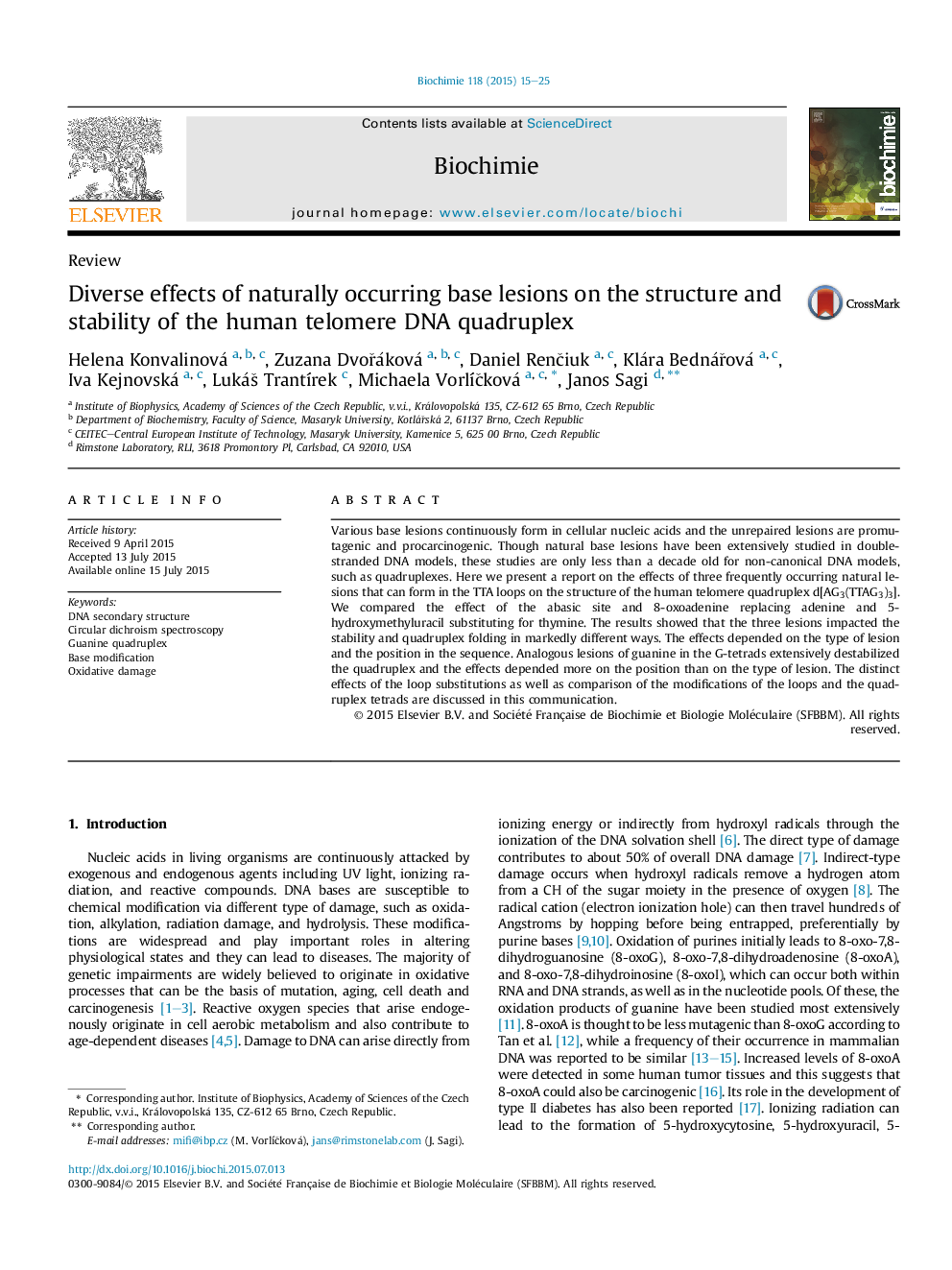| Article ID | Journal | Published Year | Pages | File Type |
|---|---|---|---|---|
| 8304730 | Biochimie | 2015 | 11 Pages |
Abstract
Various base lesions continuously form in cellular nucleic acids and the unrepaired lesions are promutagenic and procarcinogenic. Though natural base lesions have been extensively studied in double-stranded DNA models, these studies are only less than a decade old for non-canonical DNA models, such as quadruplexes. Here we present a report on the effects of three frequently occurring natural lesions that can form in the TTA loops on the structure of the human telomere quadruplex d[AG3(TTAG3)3]. We compared the effect of the abasic site and 8-oxoadenine replacing adenine and 5-hydroxymethyluracil substituting for thymine. The results showed that the three lesions impacted the stability and quadruplex folding in markedly different ways. The effects depended on the type of lesion and the position in the sequence. Analogous lesions of guanine in the G-tetrads extensively destabilized the quadruplex and the effects depended more on the position than on the type of lesion. The distinct effects of the loop substitutions as well as comparison of the modifications of the loops and the quadruplex tetrads are discussed in this communication.
Keywords
Related Topics
Life Sciences
Biochemistry, Genetics and Molecular Biology
Biochemistry
Authors
Helena Konvalinová, Zuzana DvoÅáková, Daniel RenÄiuk, Klára BednáÅová, Iva Kejnovská, LukáÅ¡ TrantÃrek, Michaela VorlÃÄková, Janos Sagi,
